
Diseases and Parasitic Pests of Finger Lime
Prevent, recognise and treat effectively
Contents
Highly sought after by chefs and food enthusiasts alike, the finger lime (Microcitrus australiasica) forms a small bush that rarely exceeds 2m in height when potted, or 3m when planted in the ground. This remarkable citrus stands out for its small, finger-sized fruits, often deep purple to crimson at ripeness, filled with translucent, crunchy pulp pearls that burst in the mouth. This compact bush also produces fragrant flowering and glossy green foliage, borne on very thorny, slender stems. Frost-sensitive below -3°C, this unique citrus is best grown in containers to be overwintered in a conservatory or greenhouse.
While relatively hardy, it thrives when its growing conditions are met. At the slightest deviation, diseases and parasitic issues may arise. Discover how to identify, treat naturally, and prevent them.
The finger lime, a demanding bush
The finger lime (Microcitrus australasica) has moderate hardiness (down to -3 to -4°C at most) and a metabolism sensitive to cultivation variations. In temperate climates, container growing is essential to control frost protection and water supply. This constraint makes the species more vulnerable to certain imbalances, particularly excess moisture around the roots, micronutrient deficiencies, overly dry indoor air or sudden temperature fluctuations. The resulting stress weakens its natural defences, making the plant more prone to parasitic attacks or fungal diseases.
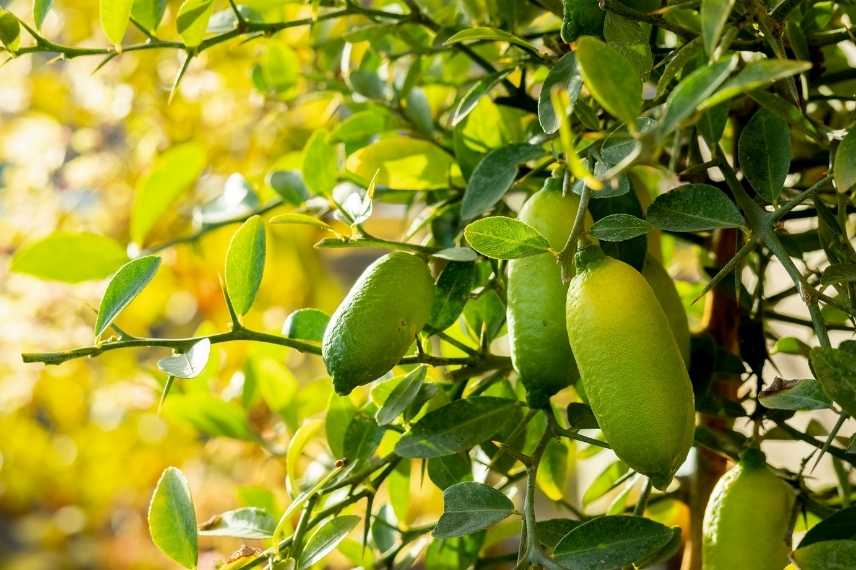
At the slightest cultivation mistake, the finger lime can become susceptible to diseases and pests
Poorly drained compost and an undersized pot encourage water stagnation around the collar, creating an ideal entry point for pathogenous fungi. Conversely, prolonged water shortage, especially during active growth or fruiting periods, causes leaf drop, desiccation of young shoots and general weakening. These stressful conditions create favourable ground for opportunistic pests like scale insects, mites or aphids.
The finger lime also has particular requirements regarding fertilisation. Without regular applications of nutrients suited to citrus trees, deficiency symptoms appear rapidly.
The most common parasitic pests of finger lime
The pests that attack finger limes are more or less the same as those that sometimes infest lemon or orange trees. Let’s take a quick overview of these pests to effectively combat them.
Aphids
These small piercing and sucking insects cluster on young shoots and stems to extract sap. Their secretions form a sticky, viscous mass called honeydew. They weaken the finger lime and can transmit diseases.
Symptoms: Young leaves weaken, curl, and deform. Black spots, signs of sooty mould, appear on the foliage.
What to do?
- Spray a mixture of water and black soap
- Mist with garlic decoction or nettle purin on the foliage
- As a last resort, use a natural pyrethrum-based insecticide
Scale insects
Mealybugs and hard scale insects are the types of pests found on finger lime trees. They also pierce and suck sap from young leaves, forming cottony clusters on the undersides.
Symptoms: Leaves become sticky due to secreted honeydew, though the risk of sooty mould is secondary. Growth slows, and the bush weakens.
What to do?
- Scrape off cottony clusters with a cotton bud soaked in 90°C alcohol
- Spray affected areas with a solution of water, black soap, 90°C alcohol, and vegetable oil.
Red spider mites
These are mites, called two-spotted spider mites, invisible to the naked eye but detectable by the fine webs they leave behind. Their presence is encouraged by dry air, and they reproduce very quickly.
Symptoms: Small yellow spots appear on the foliage, which discolours, dulls, dries, and falls off.
What to do? Simply misting the foliage with non-calcareous water is enough to eliminate these red spider mites. If temperatures allow, it’s recommended to move the finger lime outdoors or at least ventilate the room.
Whiteflies
Tiny whiteflies settle on the undersides of leaves, suck sap, and fly away at the slightest touch. They reproduce very quickly.
Symptoms: Tiny feeding spots appear on the foliage, and the bush shows overall weakening.
What to do? Start by ventilating the space well or moving the citrus tree outdoors. Spraying soapy water mixed with vegetable oil is effective, as is nettle purin.
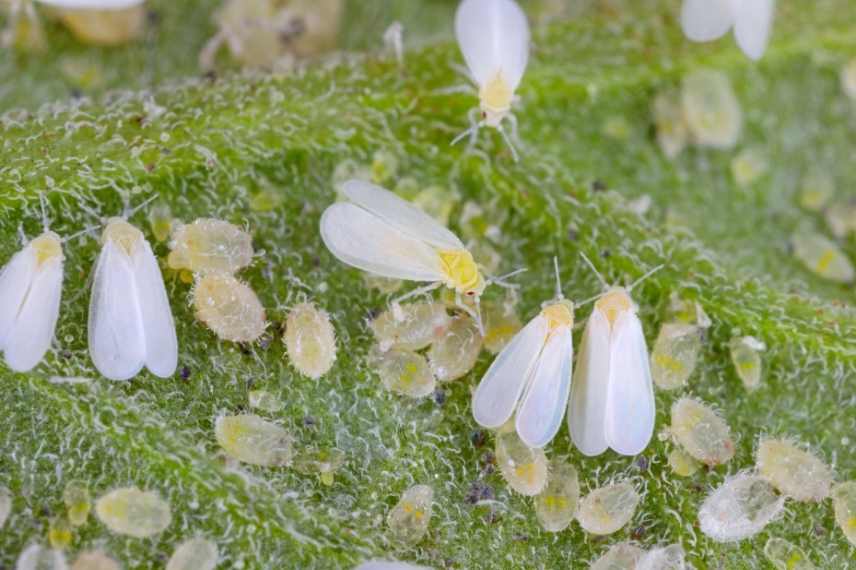
Whiteflies reproduce very quickly
Citrus leaf miner
This is the caterpillar of the moth Phyllocnistis citrella, which attacks finger lime trees grown outdoors. It burrows tunnels in young foliage and feeds on the tissues.
Symptoms: The caterpillar leaves behind tunnels or mines that create pale, serpentine trails on the foliage. Leaves yellow and dry out.
What to do? Remove affected leaves and dispose of them at a waste facility. If your finger lime is outdoors, you can use pheromone traps that capture males and prevent mating.
The main diseases affecting finger limes
Like all other citrus trees, the finger lime can be susceptible to several diseases. Some particularly affect bushes grown in pots, while others attack plants in open ground. Note that Huanglongbing (or Citrus greening), a devastating disease for citrus crops, is currently only present in Asia, America and Africa, but not yet in European territory.
The finger lime can be affected by brown rot and powdery mildew, two fairly common fungal diseases. I invite you to read these articles Brown rot in fruit trees and Powdery mildew or white mould.
Phytophthora gummosis
This is a serious disease caused by fungi of the genus Phytophtora sp. which mainly affects the trunk and roots of the finger lime. Poor growing conditions with insufficient drainage and excessive moisture around the collar are often the cause of this fungal disease.
Symptoms: amber gum oozing appears on the trunk, frequently accompanied by scaly necrosis. The lime tree weakens, foliage turns yellow, branches dry out and growth stagnates.
What to do? Remove affected branches and clean infected areas, then spray with Bordeaux mixture.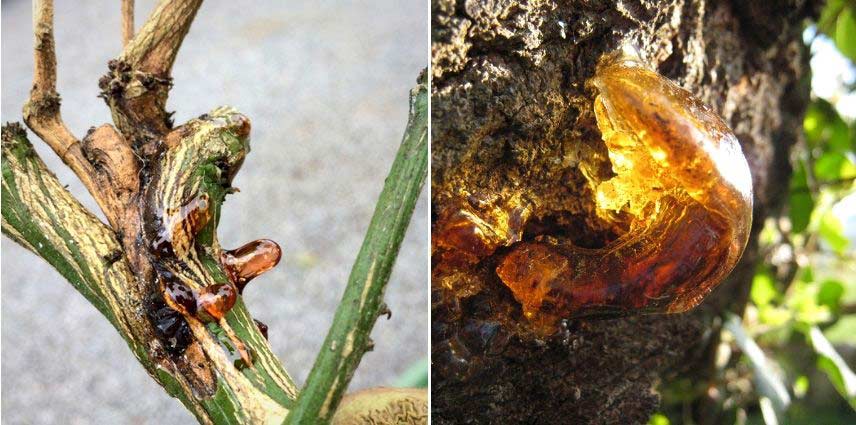
Citrus canker
Citrus canker, caused by the bacterium Xanthomonas citri subsp. citri, is a dreaded disease that can affect finger limes like other citrus trees, although this species seems less affected than conventional lemon trees. Contamination occurs mainly through splashes of rainwater or irrigation, in the presence of wounds on leaves, stems or fruits, usually caused by wind, insects or improper pruning.
Symptoms: small brown lesions with depressed centres, bordered by a yellow halo, appear on leaves. Foliage and fruits drop prematurely if the attack is severe.
What to do? No curative treatment proves effective. Remove affected parts. Prevention is key (avoid wounds, protect the finger lime from rain and apply a preventive treatment of Bordeaux mixture)
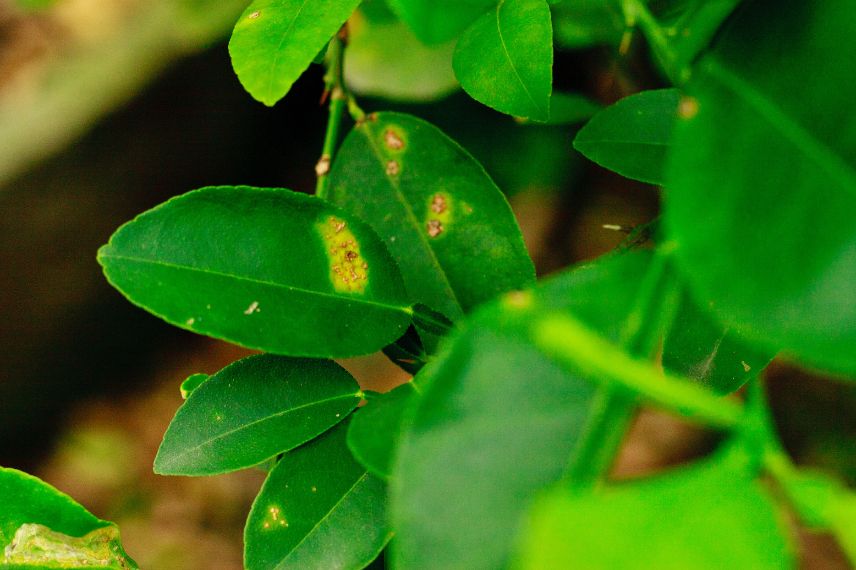
Citrus canker
Sooty mould
This is a fungal disease directly linked to the presence of aphids, scale insects and whiteflies. It’s not a very serious disease, but it stops photosynthesis.
Symptoms: a black, soot-like coating forms on sticky leaves due to honeydew. The lime tree weakens and loses its aesthetic appeal.
What to do? The only solution is to combat the pest insects. Also clean the foliage with water.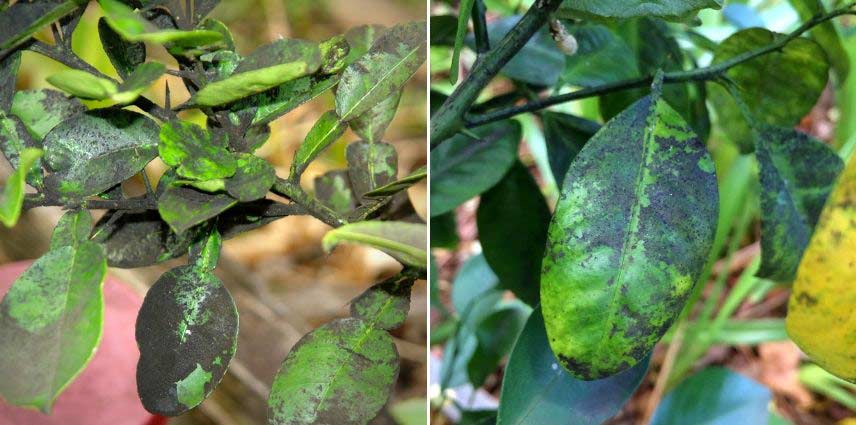
Chlorosis
This is actually a false disease manifested by yellowing foliage. The veins remain green. Chlorosis is caused by iron or magnesium deficiency, itself due to overly high pH or depleted substrate.
What to do? Apply iron chelates and special citrus fertiliser. Substrate amendment is also recommended.
Mal secco or dry disease
This is a serious disease caused by the fungus Phoma tracheiphila which affects all lemon trees. This fungus blocks sap circulation.
Symptoms: leaves discolour and dry out, branches die. Numerous suckers appear at the base of the tree. When cutting diseased branches, an orange coloration is visible.
What to do? Remove branches and dispose of them properly, then apply fungicide to wounds. If your lime tree is severely affected, you’ll need to remove it.
Prevention strategies for a healthy finger lime
Good growing conditions are key to plant health:
- Place the lemon tree in a bright spot, sheltered from cold winds and draughts, with a stable temperature – cooler if overwintered in a conservatory
- Provide a well-draining substrate rich in organic matter, neutral to slightly acidic
- Pruning should be moderate to allow air and light penetration
- Watering is regular, almost daily during flowering and fruiting periods, using non-calcareous water, with no standing water in the saucer or planter
- Fertilise regularly with a citrus trees-specific fertiliser.
- Subscribe!
- Contents
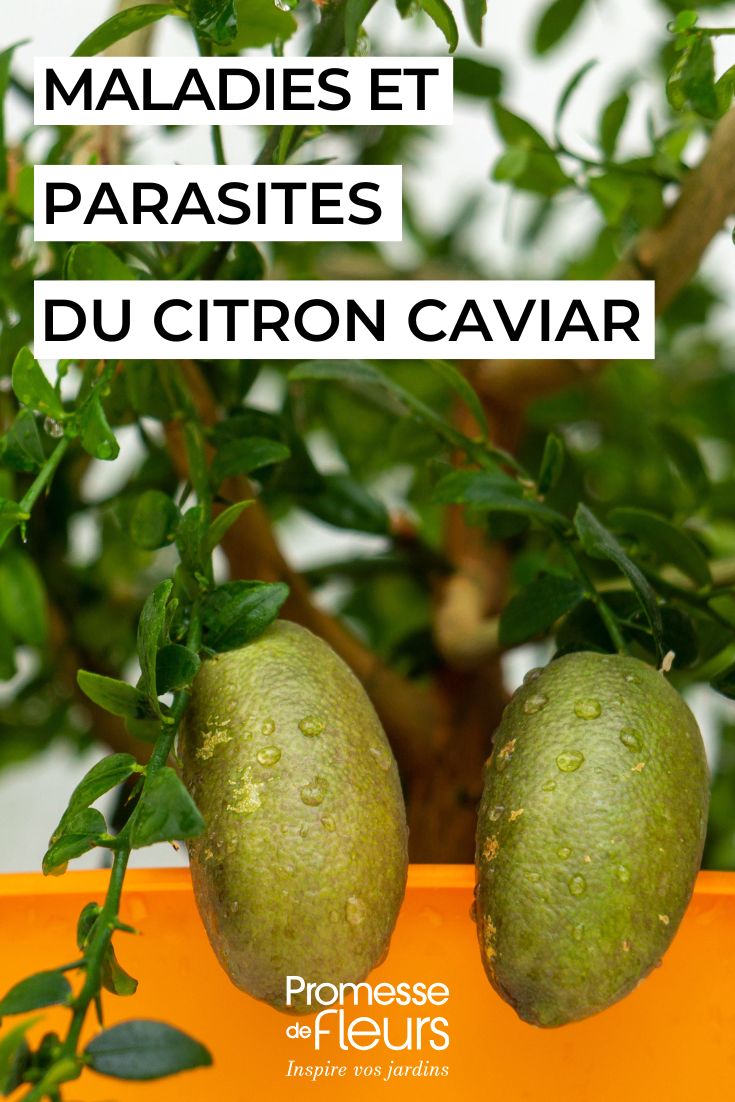































Comments